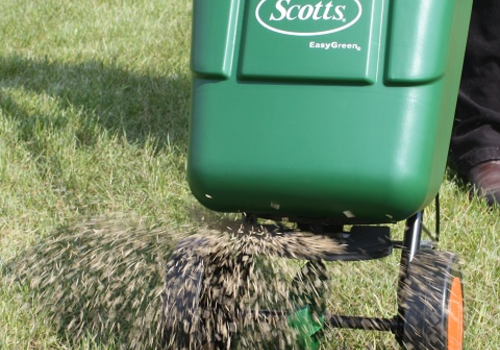Sandy soil can be a challenge for growing lush, green grass because it drains quickly and lacks the nutrients needed for healthy plant growth. However, with proper preparation and amendments, you can create an ideal environment for grass seed to thrive.
Test Your Soil
Conducting a soil test will determine its pH level and nutrient content. Sandy soil typically has a low nutrient content and may be too acidic or alkaline for optimal grass growth. You can purchase a soil test kit from a garden centre or send a sample to a local agricultural extension office. The results will help you decide what amendments your soil needs.
Improve Soil Structure with Organic Matter
One of the biggest challenges of sandy soil is its inability to retain water and nutrients. Adding organic matter such as compost, peat moss, or well-rotted manure helps improve soil structure by increasing its ability to hold moisture and nutrients. It will also enhance the soil’s fertility and provide a better foundation for grass seed.
• Spread a 2- to 3-inch layer of compost or peat moss over the soil.
• Use a rake or rototiller to mix the organic material into the top 6 inches of soil.
• Water the area lightly to help the amendments settle.
Add Soil Amendments
Depending on your soil test results, you may need to adjust the pH and nutrient levels. Sandy soil often lacks essential minerals such as nitrogen, phosphorus, and potassium and benefits from the following additions:
• Lime - if the soil is too acidic (pH below 6.0), apply agricultural lime to raise the pH.
• Sulphur - if the soil is too alkaline (pH above 7.5), apply elemental sulphur to lower the pH.
• Fertiliser - use a slow-release fertiliser high in phosphorus (such as a starter fertiliser like KissMyGrass Pre-seeding Lawn and Sportsfield Fertiliser 6.9.6) to promote root development.
Follow the application rates recommended on the product labels or by your soil test results.
Improve Water Retention
Sandy soil drains quickly, which can lead to dry conditions that prevent grass seeds from germinating properly. To improve water retention, consider adding:
• Clay-based soil conditioners - these help bind sand particles together, slowing down water drainage.
• Mulch or straw - applying a light layer of straw after seeding can help retain moisture.
• Hydrogel or water-absorbing crystals - these products absorb and slowly release water, reducing the frequency of watering.
Level and Prepare the Soil
Once the amendments are mixed into the soil, level the ground with a rake to create an even surface. Fill in any low spots to prevent water pooling, which can cause uneven germination.
Tips for Sandy Soil Preparation
• Avoid compacting the soil by walking on it too much.
• Use a roller to gently firm the soil before seeding.
• Ensure the area has proper drainage to prevent water runoff.
Choose the Right Grass Seed
Weak, sandy soils need a seed that will stabilise quickly and create a long-lasting sward with a strong root structure. Fescues are ideal as they adapt well to various conditions and offer good drought resistance.
At Boston Seeds, we offer several grass seed mixes that will thrive in sandy soil, including:
BS Coastal Sites - Salt Tolerant Grass Seed – ideal for sandy soil, this seed mix contains ryegrass, fescue, and bentgrass varieties.
Shade Tolerant Grass Seed – with amenity fescues for drought tolerance, this is a hardwearing grass seed for dry, sandy soils.
BS Sports and Playing Fields Grass Seed – containing creeping red fescue known for its very deep root system which makes it an ideal choice for drought prone, sandy soils.
Sowing Grass Seed for Sandy Soil
• Spread the grass seed evenly using a rotary spreader.
• Lightly rake the soil to cover the seeds with a thin layer of soil.
• Apply a light layer of mulch or straw to retain moisture.
Watering Newly Sown Grass Seed
• Keep the soil consistently moist, especially during the first few weeks.
• Water lightly 2-3 times a day until the seeds germinate.
• Once the grass begins to grow, reduce watering to deeper, less frequent sessions to encourage strong root development.
Maintaining Your New Sandy Soil Lawn
Once your grass starts growing, follow these maintenance tips:
• Mow at the right height - wait until the grass reaches about 3 inches before the first mowing. Keep your mower blade sharp to prevent tearing the grass.
• Fertilise as needed - use a balanced fertiliser every 6-8 weeks to promote healthy growth. KissMyGrass Premium Spring & Summer Lawn and Sportsfield Fertiliser 12.5.5+ contains a balanced blend of nutrients for healthy growth.
• Monitor moisture levels - since sandy soil dries out quickly, continue watering deeply but less frequently to encourage deep roots.
Preparing sandy soil for grass seed requires effort, but with the right steps, you can create a thriving lawn. By improving soil structure, adding nutrients, and selecting the right grass seed variety, your lawn will have the best chance to establish strong roots and stay lush and green. Regular maintenance will ensure that your grass remains healthy for years to come.
Our sales team is available to answer any questions you may have about grass seed for sandy soil, via email or over the phone on 01205 280069.


